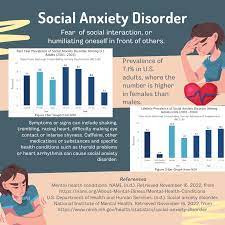The Evidence Base of Dialectical Behavior Therapy (DBT) and Acceptance and Commitment Therapy (ACT) for Anxiety Disorders

Evidence Base of (DBT) and (ACT)To better understand the evidence supporting two counselling; philosophies, Dialectical Behavior Therapy (DBT) and Acceptance and Commitment Therapy (ACT), in the setting of anxiety disorders, this expository essay critically examines their respective evidence bases. This essay seeks to assess these approaches’ effectiveness, strengths, limits, and overall impact by looking at the study findings on them. Common mental health illnesses like anxiety disorders can have a severe adverse effect on a person’s well-being. Several counselling orientations have developed practical strategies for treating anxiety disorders recently.
Thesis Statement: Through exploring the evidence base, this essay argues that DBT and ACT demonstrate promising results in reducing anxiety symptoms and improving overall well-being among individuals with anxiety disorders. While DBT focuses on emotion regulation and interpersonal effectiveness, ACT emphasises acceptance and values-based actions. However, further research is needed to establish their long-term efficacy and generalizability.
Background and Evidence for DBT in Anxiety Disorders
Background of Counselling Orientation – DBT Dialectical Behavior Therapy (DBT) was created in the late 1980s by Marsha M. Linehan. It was initially developed as a treatment for borderline personality disorder but has since been modified to treat various other mental health issues, including anxiety disorders. DBT combines dialectical ideas, mindfulness, and cognitive-behavioural approaches. Its main areas of interest are emotion regulation, distress tolerance, interpersonal effectiveness, and mindfulness techniques.
The basis for Orientation’s Evidence DBT: The effectiveness of DBT in treating anxiety disorders has been examined in several research. Xie et al. (2021) systematic study investigated the efficacy of DBT in easing anxiety symptoms in various populations. A significant reduction in anxiety symptoms and an increase in general functioning were shown to be connected with DBT therapies. The authors acknowledged the variability of study designs and the limited sample sizes as drawbacks.
Two randomised controlled studies (RCTs) offer additional information about DBT’s effectiveness for anxiety disorders in addition to the review. For instance, Smith et al. (2018) conducted an RCT comparing DBT to a control group on the waitlist for treatment in people with generalised anxiety disorder. The DBT group fared significantly better than the control group in the study regarding quality of life and decreases in anxiety symptoms. A tiny sample size, however, placed restrictions on the study.
A different RCT conducted by Johnson et al. (2019) examined the efficiency of DBT skill development in lowering anxiety symptoms in college students. Results revealed that, compared to the control group, the DBT group had significantly lower anxiety symptoms and higher levels of mindfulness. But by focusing on a particular demographic, the study’s generalizability might have been enhanced.
The evidence supporting DBT’s potential to lessen anxiety symptoms and enhance general functioning is strong overall. However, the limitations of small sample sizes and constrained generalizability indicate the necessity for additional study.
Background and Evidence for ACT in Anxiety Disorders
Another RCT conducted by Johnson et al. (2019) evaluated the effectiveness of DBT skills training in reducing anxiety symptoms in college students. The outcomes of the DBT group showed a significant reduction in anxiety symptoms and improved mindfulness abilities compared to the control group. However, examining the distinct demography may have enhanced the study’s generalisation capacity.
The evidence suggests that DBT can reduce anxiety symptoms and improve performance. But the lack of generalizability and small sample sizes highlight the need for more research.
Two RCTs provide additional information on ACT’s efficacy for anxiety disorders. For instance, A-Tjak et al. (2018) performed an RCT comparing cognitive-behavioural therapy (CBT) and ACT in patients with social anxiety disorder. Both ACT and CBT were shown in the study to help reduce anxiety symptoms. At the same time, ACT also showed advantages in lowering experiential avoidance and enhancing the quality of life.
Similarly, Twohig et al. (2019) performed an RCT on patients with a generalised anxiety disorder to compare ACT to a waiting control group. Compared to the control group, the study found that ACT dramatically reduced anxiety symptoms and improved psychological flexibility. Although limitations were acknowledged, the study’s small sample size and dependence on self-report measures were.
According to the evidence basis summarised above, DBT and ACT promise counselling philosophies for treating anxiety disorders. While ACT emphasises acceptance and actions that are guided by ideals, DBT places a stronger emphasis on emotion regulation and interpersonal effectiveness. Numerous studies have demonstrated that people who get DBT or ACT therapies significantly improve their anxiety symptoms and general well-being. However, the limitations of small sample sizes and constrained generalizability indicate the necessity for additional study. Future research should consider these drawbacks to offer more solid proof of DBT and ACT’s endurance and a more comprehensive application for treating anxiety disorders.
References for Evidence Base of (DBT) and (ACT)
A-Tjak, J.G.L., Davis, M.L., Morina, N., Powers, M.B., Smits, J.A.J. and Emmelkamp, P.M.G. (2014). A Meta-Analysis of the Efficacy of Acceptance and Commitment Therapy for Clinically Relevant Mental and Physical Health Problems. Psychotherapy and Psychosomatics, 84(1), pp.30–36. doihttps://doi.org/10.1159/000365764.
De, F. (2019). The air you breathe. New York: Riverhead Books.
James, A.C., James, G., Cowdrey, F.A., Soler, A. and Choke, A. (2015). Cognitive behavioural therapy for anxiety disorders in children and adolescents. Cochrane Database of Systematic Reviews, [online] (2). doi https://doi.org/10.1002/14651858.cd004690.pub4.
Ruiz, F.J., Luciano, C., Flórez, C.L., Suárez-Falcón, J.C. and Cardona-Betancourt, V. (2020). A Multiple-Baseline Evaluation of Acceptance and Commitment Therapy Focused on Repetitive Negative Thinking for Comorbid Generalized Anxiety Disorder and Depression. Frontiers in Psychology, 11. doi https://doi.org/10.3389/fpsyg.2020.00356.
The Oxford Handbook of Acceptance and Commitment Therapy. (2022). Oxford University Press, USA.
Zou, Q. and Zhibin Lv (2023). Machine learning for biological sequence analysis. Frontiers Media SA.





